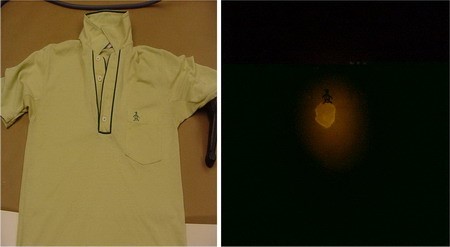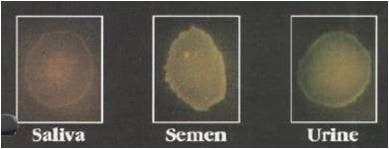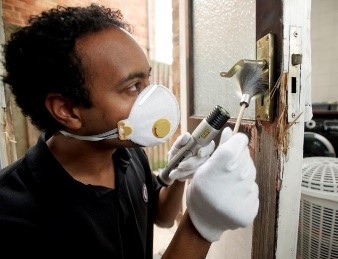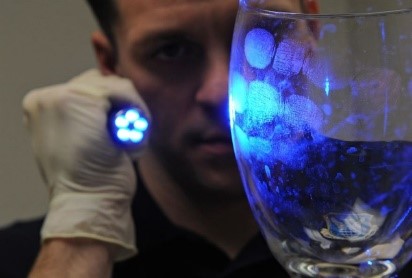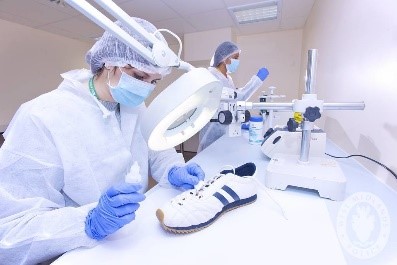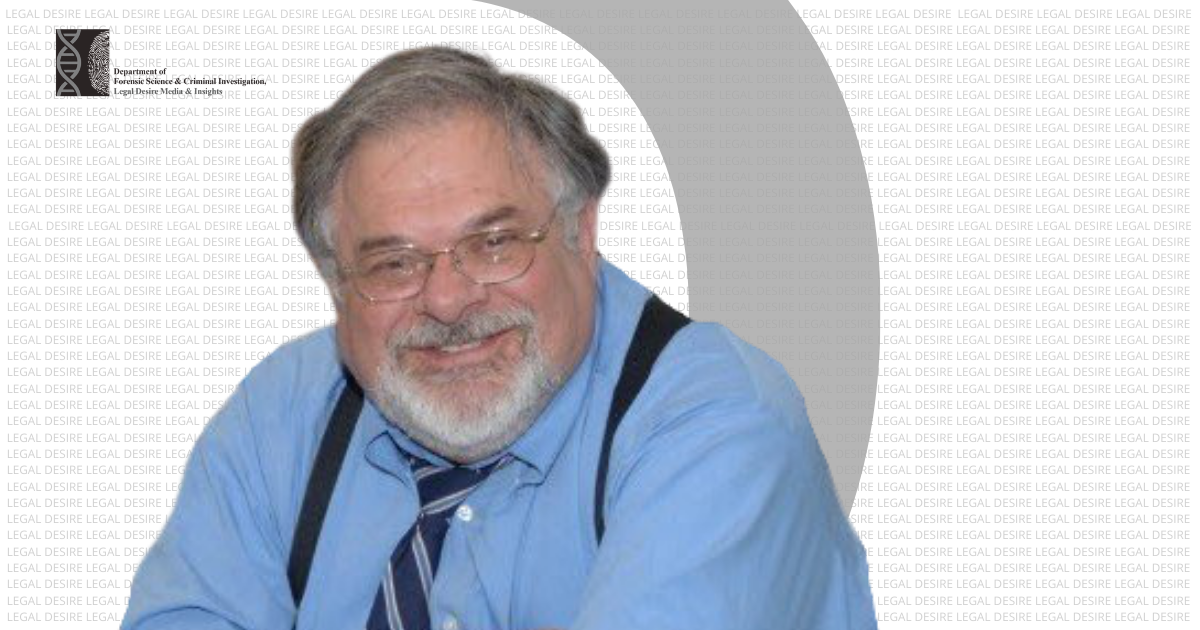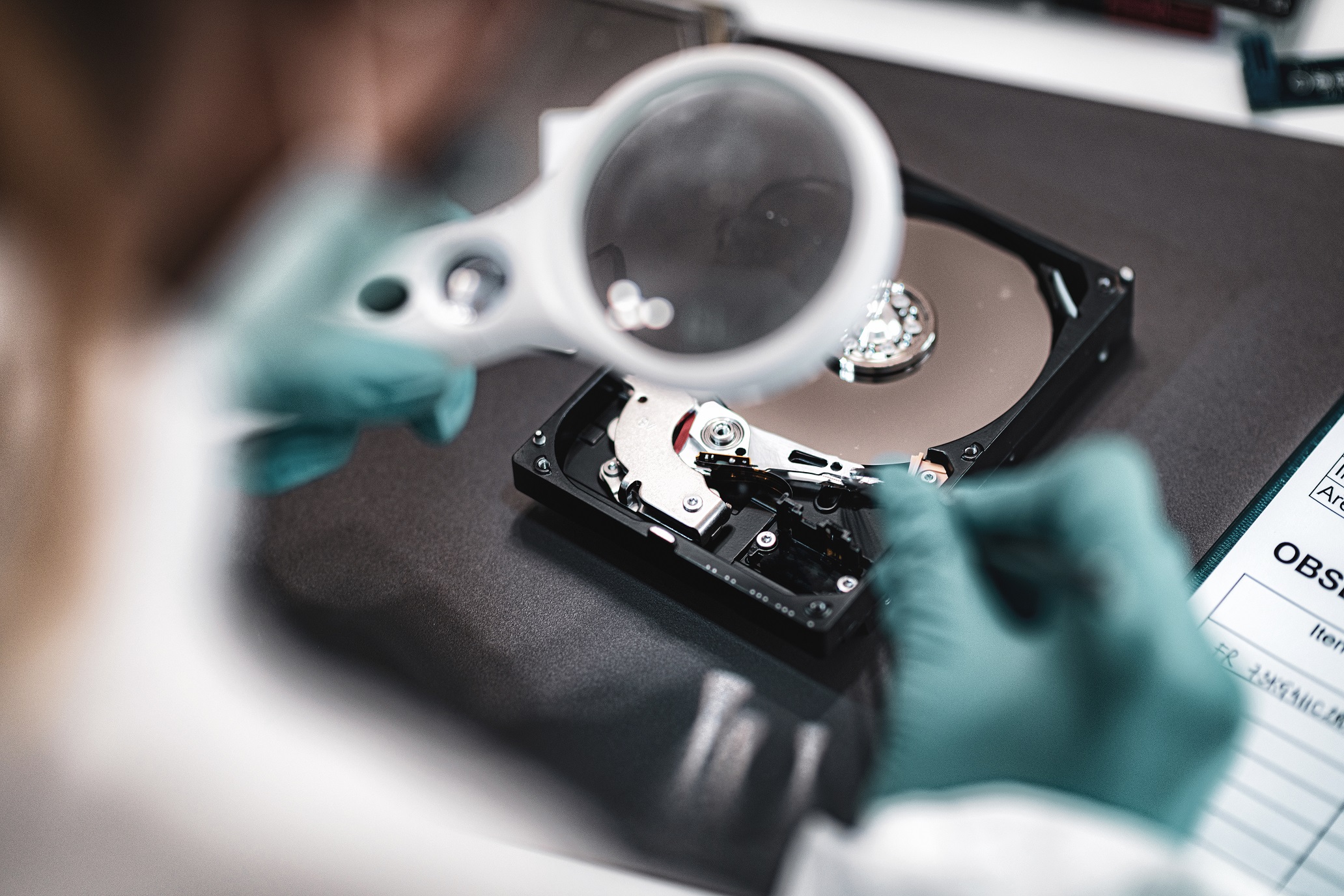Now Reading: Use of Alternate Light Source in Crime Scene Investigation
-
01
Use of Alternate Light Source in Crime Scene Investigation
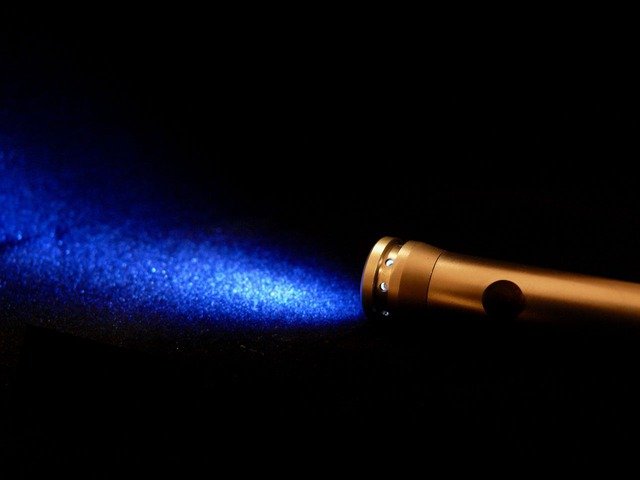
Use of Alternate Light Source in Crime Scene Investigation
“The analysis can be no better than the sample analysed”
The above quote is The Principle of Analysis, one of the most formidable principles in Forensic Science. These principles lay a guideline and set a standard which ensures the quality of work.
Over the past few decades, the process of investigation by policing agency has been levelled up by the help and support of forensic science. From providing assistance in the collection of evidence to its accurate analysis, all of this has led to the increase in professionalism. The importance of science and technology in policing is now been recognized worldwide.
Crime Scene Investigation is the systemic approach taken to investigate a crime scene. This process involves the use of both scientific and investigative skills. A crime scene investigator is either police officer and/or forensic scientist. The investigator is expected to have experience and expertise skills in creative thinking, application of scientific methods, strong logical reasoning, etc.
When a crime occurs, it is very important to understand its nature and the motive of the criminal. A well-planned investigation leads us to all these answers. The main aim of a crime scene investigation is:
- Recovery of evidence
- Reconstruction of scene of crime
- Determine the modus operandi
- Ascertain the sequence of events that may have led to the incident
Crimes can be solved only when a proper investigation has been conducted. Processing a crime scene involves certain parameters like:
- Secure and isolate the crime scene
- Record the crime scene
- Systematic search for evidence
- Collecting and packaging of evidence
All these above steps involved in Crime Scene Investigation must not be considered dynamically. The most crucial step is proper evidence collection & its documentation because it determines whether any analysis done by forensic scientist will be a success or failure.
From a criminal’s point of view an ideal crime scene will usually be dark, deserted place with minimum surveillance. Such a crime scene may cause it difficult for the investigating team to search efficiently. In such poorly lit crime scenes, the simple visual search may not be sufficient. Thus, to ensure proper evidence collection it is very crucial to use proper lighting.
Depending on the crime scene’s location, the time of day, presence of natural light, etc. different types of lights are used. The mostly common form of light is the visible light. It is generally used to conduct the forensic examination of either the crime scene or the evidence procured from the crime scene.
Many times, it is observed that the stations or control room of the authorities are not very close to the scene of crime. Before leaving for the search, the crime team must ensure that they have all the required things. It is the responsibility of the crime scene investigator to get the details of the location and to interpret which type of light source would be required by the investigating team.
With the developing technology, the criminals have also adapted accordingly. They have started using the help of many newly developed methods which provide them a helping hand in eloping from the eyes of the authorities. This is indeed a nig problem for the investigating agencies. One of the solutions to this problem is the use of Alternative Light Source.
Alternate Light Source (ALS), is an effective, non-invasive, non-destructive, method used for analysing different types of evidence. It helps in revealing hidden evidence and clues which may otherwise prove to be significant.
In general, an Alternate Light Source consists of light source and filter. The light source can be a laser light or an incandescent bulb. ALS may either contain a single filter or a combination of filters. These filters allow only the selected wavelengths of light to pass through them. An ALS may also consist of a device which is used to deliver the light from the source to the area under examination. If the wavelength of light being used has a potential to be harmful, then an ALS system may also be equipped with an appropriate viewing accessory like protective goggles.
The Developmental History of ALS has been very prompt. In the 1970s, the use of ALS in forensic was pioneered by the Royal Canadian Mounted Police (RCMP). Their use of argon-ion lasers led to a whole new dimension in the field of forensic analysis. As much as these techniques were useful, they also had certain drawbacks. These instruments were very expensive and their bulky nature made it impossible for them to be used at the crime scene.
Fig.1- Use of ALS for examining the evidence in the laboratory CITATION Don1 l 16393 (Penven, n.d.)
The early 1980s, saw the rise of portable lasers. They could be easily taken to the crime scene. Despite its effective cost and portability their use was restricted because these devices were available only in a single colour of light.
The 1990s saw the revolution in the forensic light industry. High-intensity incandescent lamps were now easily available. These machines were sturdy and due to their light weight, they were very easy to carry around. They could be used to analyse any physical evidence by passing the intense light beam through a particular filter. Filters ranging from visible blue, green, yellow, and red were commonly used to enhance the quality of the otherwise invisible evidence.
At present the typical design of an ALS system consists of a wheel, which contains around six filters, which can be rotated as per the need. Another design of ALS system makes use of a flexible fibre optic cable. This system is widely used when the area to be searched is highly confined.
Fig.2- “Laser lights” by SandiaLabs is licensed under CC BY-NC-ND 2.0
The Alternate Light Source is based on the basic Principle of Fluorescence. Certain materials have the inherent ability to interact with monochromatic light radiations. They absorb a particular wavelength, and then emit a longer wavelength of light. These help in locating and identifying the potential evidence.
When the monochromatic light of a particular colour and wavelength strikes an object, some of the energy gets absorbed and the rest is used to excite the florescent active compound. The object then emits a monochromatic light of a different colour and wavelength. Due to loss of some energy, the fluorescence emitted has less intensity than the light initially provided. This emitted light can be detected by the help of certain filters because to visualise this less intensity radiation, it is essential to block the light at all other wavelengths. Thereby, these filters aid in making the fluorescence light visible by passing only the desired fluorescence.
Alternate Light Source finds high usage in crime scene investigation because it has the ability to locate the materials which can be made to fluoresce, if given the corresponding radiation. Irrespective of the nature of the material on which the evidence is present, the organic materials like biological evidences like body fluids, human remains, teeth, bones, etc. can very easily detected by using ALS.
For instance, for the naked eye, it is next to impossible to detect a fingerprint. But with the assistance of ALS, a blue-green light from a suitable light source can be allowed to fall on the suspected area. The organic material present in the fingerprint will eventually start to give a yellow fluorescence. Thus, a fingerprint can be easily detected without the use of any chemical powder or dye.
Different organic materials will have the tendency to interact with different wavelengths and thus other biological samples can also be detected and analysed in the similar manner.
Fig.3- shirt as viewed in normal lighting (left) and a semen stain on the pocket (right), just under the logo, as seen using the ALS CITATION ALT l 16393 (ALTERNATE LIGHT SOURCE, n.d.)
As different materials will emit different colour of light, it is now the skill of the investigator to correctly interpret the emitted radiations. Other parameters to be taken care of are:
- Wisely selecting the colour of the illuminating light. This will ensure maximum fluorescence comes from the evidence and not from the supporting material
- The selection of the filter(s) is also very important as it will block all, except the desired wavelengths of the illuminating light.
- To ensure that the selected filter does not block the wavelength of the emitted fluorescent light.
Applications of ALS are numerous. They help in narrowing down the area for sample collection. A number of physical evidence types are known to fluoresce when exposed to ALS. These include:
- Body fluids
- Fibres
- Bone & teeth fragment
- Fingerprints, etc.
Body fluids can be detected using alternate light sources. Body fluids that can be detected include; saliva, blood, semen, urine and vaginal secretions. The near-ultraviolet light radiations are used for identification of semen stains. Blood can be made to glow by treating it with certain chemicals like Luminol. Stains of saliva and urine can be revealed by the use of UV ALS.
Fig.4- various stains on fabric from various biological fluids CITATION ALT l 16393 (ALTERNATE LIGHT SOURCE, n.d.)
Hair and fibre can be located with the help of ALS by using oblique light on a surface. This will help in revealing small particles of hair and fibre, which can then be collected. In some cases, if the hair or fibre has been dyed there is a chance that it will illuminate under UV light or blue light.
Analysis of Weapons like gun or knife can be done using ALS. They are made up of metals and when examined under normal visible light they do not yield any information as such. But when viewed under green light and observed via an orange filter, it is possible to locate fingerprints and palmprints present on the evidence.
Analysis of Trace evidence like gunshot residue, paint chips, crystals, etc. can be readily observed using the appropriate illumination source. Due to their small size and quantity, it is very difficult to locate and then efficiently collect them. The gunshot residue pattern can be analysed just by observing the pattern, eliminating the need to touch it. By using ALS at different wavelengths, these particles uniquely interactwith the radiation and emit peculiar patterns. Thereby, allowing each evidence to be detected uniquely.
Fig.5- “Day 130 – West Midlands Police – FSI – Forensic Scene Investigator” by West Midlands Police is licensed under CC BY-SA 2.0
Bone & teeth fragment are made up of organic material. According to a recent research from brazil CITATION Ger17 l 16393 (Geraldo Elias Miranda, 2017), the study showed that the best combination to detect bone and tooth with ALS is a 455 nm illumination with an orange filter. Under these conditions, the biological material had markedly higher fluorescence than the inert material. This study had demonstrated that it was possible to not only detect but also to differentiate the bone and tooth fragments when mixed with other debris.
Questioned document can be analysed for cases where messages are hidden using special inks which are visible under varied limitation conditions. Such writings are classified as secret writings. In cases of forgery ALS comes to aid in determining the difference between the inks used. Even the inks of a similar colour can be manufactured using different chemical compounds. These slight variations in the ink can be seen when observed under visible light and then under infrared light. A difference in their glow can be noted if the inks are of different compositions or if they are used at a sufficient interval of time.
Fig.6- “Day 162 – West Midlands Police – Historic image of forensic investigator” by West Midlands Police is licensed under CC BY-SA 2.0
Latent fingerprint pattern can be observed from almost any surface with the help of ALS as it enhances the contrast with the help of suitable light source. ALS further helps by eliminating the need to lift the fingerprints by the traditional methods, which were time consuming and not very efficient. Fingerprints can also be detected from textured backgrounds, which were otherwise impossible to lift with the traditional methods. ALS enables the ridges to fluoresce with a higher intensity, which can later be photographed.
Fig.7- use of ALS for examining the fingerprints present on the glass surface CITATION For l 16393 (Forensic lighting techniques: Understand the importance of lighting techniques in forensic science, n.d.)
Footprint impressions are one the most valuable and commonly found evidence. Whether the crime scene is of burglary, rape or homicide, footprints can easily be tracked down. Illuminating the place with oblique lighting, the footwear impression along with any tiny fibres, soil, gravel and other traces of evidence can be made visible.
Fig.8- “Day 53 – West Midlands Police Forensic Scene Investigators Lab” by West Midlands Police is licensed under CC BY-SA 2.0
Other forms of physical evidences, which do not undergo fluorescence, can now be made such by the use of certain fluorescent chemicals. Alternative Light Source provides a highly efficient and practical approach in the field of crime scene investigation. The following table give the wavelengths and their particular applications CITATION Chr l 16393 (Stoilovic).
The main challenge is to identify the combination of wavelength and filter that best detects the biological material and has greater fluorescence when exposed to ALS. The user should have an understanding about tuning the wavelength selector. The lack of experience to the investigators and the need of extensive research for specific materials should be addressed soon. ALS can also be used to provide the appropriate lighting conditions and then special film can be used to photograph these evidences.
The results obtained from the use of an ALS should only be considered as preliminary and must further be confirmed by performing the appropriate lab tests. Currently, many branches of forensic science are researching on the uses and varied applications of using an ALS. Some of these areas are;
- Detect bone and teeth from burned
- Detection of bruises under various light sources
- Detect latent blood stains from different fabrics
- Detect certain drugs
At present, the market is equipped with various types of ALS, each having a slight variation from the other. The nature and seriousness of the crime should be the sole criteria for deciding which illumination technique should be applied. Thus, ALS system are very useful and can be used in any imaginable field for the purpose of investigation.
References
- BIBLIOGRAPHY ALTERNATE LIGHT SOURCE . (n.d.). Retrieved from Bureau of Criminal Apprehension: https://dps.mn.gov/divisions/bca/bca-divisions/forensic-science/Pages/forensic-programs-crime-scene-alt-light.aspx
- Alternate Light Source Analysis. (n.d.). Retrieved from encyclopedia.com: https://www.encyclopedia.com/science/encyclopedias-almanacs-transcripts-and-maps/alternate-light-source-analysis-0
- creativecommons. (n.d.). Retrieved from https://creativecommons.org/
- Forensic lighting techniques : Understand the importance of lighting techniques in forensic science. (n.d.). Retrieved from FutureLearn.com: https://www.futurelearn.com/info/courses/science-behind-forensic-science/0/steps/56534
- Geraldo Elias Miranda, R. F. (2017). Use of an Alternate Light Source to Detect Tooth and Bone. Brazilian Dental Journal.
- Penven, D. (n.d.). Crime Scenes and Alternate Light Sources. Retrieved from Crime Scene Investigator Network: https://www.crime-scene-investigator.net/alternatelightsources.html
- Saferstein, R. (n.d.). Criminalistics : An Introduction to Forensic Science. PEARSON.
- SHARMA, D. B. (2020). FORENSIC SCIENCE IN CRIMINAL INVESTIGATION & TRIALS. LexisNexis.
- Stoilovic, C. L. (n.d.). Application of forensic light sources at the crime scene. In J. Horswell, the Practice Of Crime Scene Investigation. CRC PRESS.




